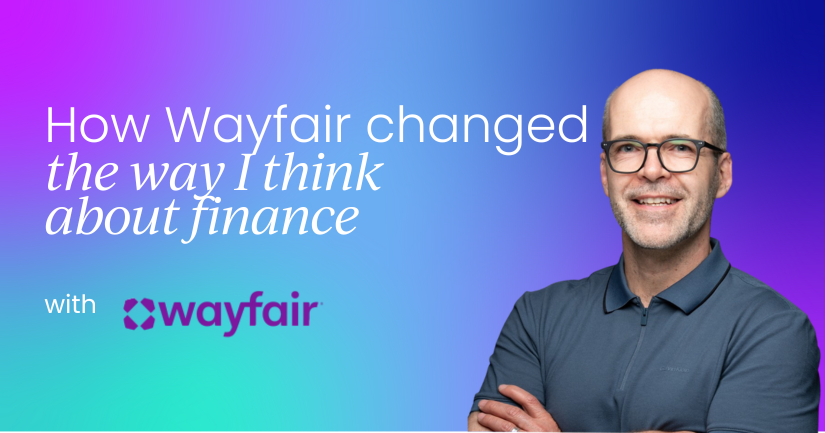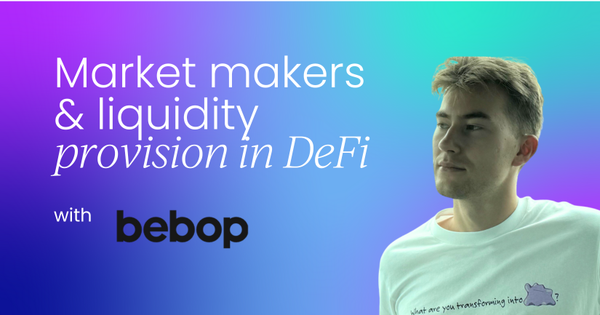The emergence of new protocols in Decentralized Finance (DeFi) has unlocked new opportunities and posed new challenges such as how to optimally source, manage, and route liquidity.
As we know in any financial market, and DeFi is no different, liquidity (the ability to buy and sell freely without altering price levels) is critical. In this nascent frontier, we have two dominant competitive frameworks in liquidity provisioning: Automated Market makers who democratized liquidity by allowing easier access and traditional market makers who apply data-driven methodologies.
Straddling the border of hybrid sophistication is the new breed of Request-for-Quote (RFQ) platforms that facilitate more efficient on-chain market making, blurring the lines between decentralized approach and centralized finesse.
This article illustrates how makers and liquidity pools co-exist in DeFi, examines the advantages and disadvantages of each approach, and why a combination of both is optimal. To understand this evolving landscape, it’s best to start with why traditional market makers continue to excel over chain liquidity pools, especially with respect to operational, efficiency, and utilization of capital.
Why market makers beat onchain liquidity pools
Market makers operate on the trading floor, always ready to buy and sell any asset at different prices on the booking for range efficiently managing risks along with getting profit value with changing value. They trade on off chain data, private company trade patterns, and trade models. Their style enables:
- Tighter spreads and lower slippage
- Real-time price discovery
- Hedging strategies that reduce risk exposure
On the other hand, the AMMs (Automated Market Makers) use fixed pricing calculations such as the x*y=k constant product formula, which does not change with market fluctuations or outside information.
That means that AMMs are inefficient in terms of capital, and liquidity providers (LPs) face impermanent loss risk, a risk created when the price of assets becomes unbalanced and LPs are taken advantage of by arbitrage traders actively exploiting price disparities.

RFQ platforms: Merging onchain transparency with offchain efficiency
However, a new breed of platforms is emerging, offering a bridge between the strengths of traditional market making and decentralized liquidity. Platforms like 0x RFQ, CowSwap, and Paraswap operate on an RFQ basis which integrates traditional market making with a decentralized model. Unlike order books and AMM curves, RFQ systems allow professional market makers to provide tailored quotes that balance responsiveness and strategic pricing.
This system provides optimal and competitive prices with lower slippage and better trade execution. Additionally, RFQ platforms have more protection against MEV and front running while making capital use more efficient for market makers.
Through RFQ platforms, market makers are able to selectively provide liquidity directly onchain, which results in better capital utilization and more efficient markets without loss of transparency or trustlessness.
Challenges of onchain liquidity pools
Although onchain liquidity pools allow frictionless access to decentralized finance (DeFi), letting anyone provide liquidity and trade assets without the need for centralized intermediaries, the technology still has major limitations which reduces its efficacy in harsher market conditions.
One of the well known problems is impermanent loss. It occurs when liquidity providers (LPs) suffer opportunity losses for not simply holding onto their assets. This risk further grows owing to how automated market makers (AMMs) operate and the dependence on arbitrage to keep prices in sync with external markets.
Another major issue remains capital inefficiency. In Automated Market Makers (AMMs), liquidity is usually spread statistically uniformly across a certain price region, and therefore, only a fraction of it is located at or near the market price at any given time. This capital inefficiency leads to shallow liquidity and greater slippage resulting in higher costs of trading and greater impact for large trades.
Furthermore, the emergence of several blockchains and decentralized exchanges has resulted in liquidity fragmentation, the phenomenon of liquidity being distributed across many isolated pools, reduces the overall market depth and increases the difficulty of finding the optimal execution path.
In addition, the fixed algorithms employed by AMMs, including their constant product formula, are overly simplistic and do not adjust automatically in real time to fluctuations in market conditions, volatility, or trading activity. This makes them less flexible and less competitive relative to traditional market makers who use real-time data and dynamic strategies.
As DeFi matures, addressing these limitations will be crucial if onchain liquidity is to compete with more sophisticated offchain systems. These structural shortcomings with AMMs restrict their efficacy in high-volume or highly volatile situations where price accuracy, execution speed, and capital efficiency are paramount.

When onchain pools outperform traditional market makers
Although traditional market makers are generally more efficient, AMMs and onchain liquidity pools remain essential to the DeFi ecosystem and can outperform in specific scenarios:
- Long-tail assets: For tokens with low demand or niche use cases, AMMs may be the only source of liquidity.
- Permissionless access: Anyone can list a token or provide liquidity without relying on institutional market makers.
- Composability: AMMs are easily integrated into other DeFi protocols (e.g., lending, yield farming, options).
- 24/7 operation: Onchain pools never go offline and are available globally, unlike centralized exchanges.
Incentive mechanisms like yield farming and governance token rewards can also make LPing attractive despite potential losses.
Toward a hybrid liquidity model
Considering the advantages of both AMMs and traditional market makers, it is clear that the future of liquidity provisions in DeFi won’t be based on a single method.
Rather, the system is progressing towards a hybrid model which combines the features of AMMs and the efficiency of RFQ-based systems. Frictionless trading systems, or RFQ platforms, are increasingly used by traditional market makers which allows for high-efficiency, dynamically priced trades with low slippage.
Even so, AMMs still serve as a baseline provider of non-restricted liquidity, especially for long tail assets and new tokens that do not yet capture the attention of professional market makers. Lately, innovations such as concentrated liquidity in Uniswap v3 have helped bridging the gap by greatly enhancing capital efficiency in AMMs. This hybrid structure enables optimized trade execution while still maintaining the open and permissionless characteristic of DeFi.
Risks and considerations
However, this blending of models introduces new risks and complexities. As traditional actors bring more sophisticated tools and strategies into the DeFi ecosystem, several challenges begin to surface:
- Data fragmentation: DeFi spreads across multiple blockchains, making unified data access difficult.
- Centralization risks: If RFQ platforms or AI-driven market makers are dominated by a few entities, it could recreate the very intermediaries DeFi aimed to eliminate.
- Transparency vs. efficiency trade-offs: Advanced pricing algorithms and offchain activity may reduce the system’s auditability and openness.
Resolving these issues calls for continuous invention in the frameworks of governance, open standards, and interconnectivity so that DeFi does not deviate from its foundational tenets amidst new challenges.
Conclusion
Looking ahead, DeFi stands at a crossroads as it evolves toward a more infrastructure-driven model. On one hand, traditional market makers using RFQ enabled platforms control risk and provide unmatched execution quality. On the other hand, liquidity pools tend to disintegrate barriers to entry for market participation. The best outcome seems to be a model where both sides support one another instead of replacing each other.
By combining a few models while providing sufficient decentralization as well as data and governance safeguards will allow DeFi to build frameworks as resilient as they are inclusive. This will make the entire ecosystem far more efficient.
Thus, the new era of DeFi will not focus on simply optimizing liquidity floor algorithms. Rather, it will transform how assets are traded, invested, and value is ultimately built in a decentralized financial landscape.
Become an Insider member
Join 1,000+ rising finance stars who trust Finance Alliance to be their preferred learning and development hub. Benefit from our community-led resources through the Insider plan, for free!
Access the latest insights from renowned finance experts (from companies like Adobe, Salesforce, Burberry, Virgin Galactic, and more), battle-tested templates & frameworks, as well as a network of peers to bounce ideas off and help overcome your challenges.
No catches, no monthly bills - 100% free, forever.



 Follow us on LinkedIn
Follow us on LinkedIn





